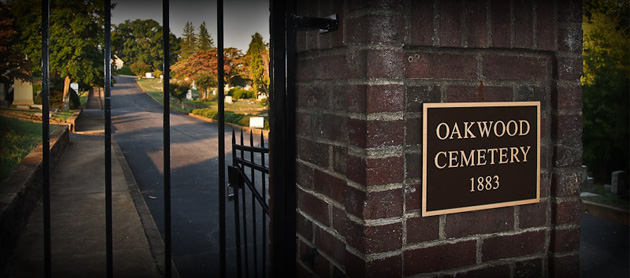By Vonda Henderson
At perhaps the most emotionally laden time a person has to go through, a question comes up. What do you want on the tombstone? Granted, it's not an immediately needed response, but it is one that requires thought - a lot of thought, as the stone will stand for decades and may be what identifies your loved on in years to come. What words or symbols will be chosen to describe what someone meant or what impact they had on others?
Through the years, many symbols have been used on tombstones to depict a variety of meanings - to define someone's livelihood, stance, military service, love, faith, and so on.
Some are easily discerned, others perhaps not.
The American flag may be incorporated to honor a person's military service. Current trends are to have a footstone designating military service.
A funeral director usually inquires about military service and will request the honorable discharge paperwork to get approval for the footstone.
An anchor was adopted by early Christians to symbolize hope and steadfastness. Its early designs may have also included a hidden cross. Of course, an anchor also denotes seamanship or may be a tribute to St. Nicholas, the patron saint of seamen. A broken anchor chain symbolizes death.
Angels are often depicted in a variety of poses. The overall meaning is as a messenger of God and spirituality. An angel with open wings conveys a soul's flight to Heaven.
A weeping angel conveys grief or untimely death. An angel with a trumpet is synonymous with judgment day. Two particular renderings symbolize angels by name - a sword in hand depicts Michael and one with a horn represents Gabriel.
A book engraving often represents the Holy Bible. It may also identify someone as a scholar, writer, or teacher.
Floral carvings were often used in Victorian times. A Calla Lily meant marriage or resurrection. Ivy or vines indicated friendship, fidelity and immortality. A daisy symbolized innocence and was often on tombstones for children. Rosemary was to represent remembrance. Acorns indicated power or authority and might be carved on stones for the military.
A Celtic cross, also known as an Irish Cross, represented eternity.
A broken column symbolized an early death or death in the prime of life. A wreath carved over a column indicated victory over death.
The use of a dove on a stone also carries a number of symbols. The overall meaning is resurrection, innocence, and peace. An ascending dove represents transport of a soul to Heaven; a descending dove reflects safe passage to Heaven, lying dead depicts a life cut short, and a dove with an olive branch represents a soul in the divine peace of Heaven.
A horseshoe represents either a horseman or a protection from evil.
A sleeping child also dates back to Victorian times and often represents a baby or young child's death.
Wheels represent the circle of life while an hourglass depicts the brevity of lift.
Professional symbols are often used to denote a person's chosen profession, especially if it's one of service, like physicians, nurses, etc.
Nowadays, stones may depict favorite activities, personal statements, or any number of personalizations as requested by the deceased. One famous stone is engraved with a recipe that friends always asked for. Another seen recently is a sunset view with empty lawn chairs.
Reading tombstones may not be your cup of tea, but it is a fascinating glimpse of a person who is remembered.
Sources: thoughtco.com, msghn.org
Click Here to view a PDF version of this article.

